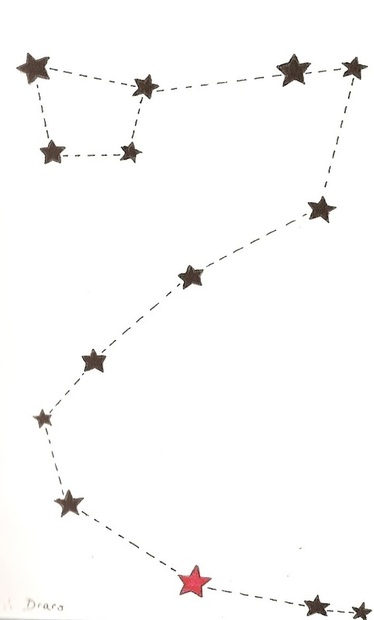Despite being the eighth-largest constellation, Draco, the constellation of the Dragon, is not especially prominent (its stars are not very bright, but five of them have known planets). It never sets below the horizon and is always visible in the Northern Hemisphere (remember circumpolarity?). The name is derived from the Latin term "draconem", meaning "huge serpent," and the constellation literally snakes its way through the northern sky.
The head of the dragon consists of four stars (Beta, Gamma, Nu, and Xi Draconis) in a trapezoid and located just north of the Hercules constellation. From there, the dragon's body winds its way through the sky, ending between the Ursa Major and Ursa Minor.
The name Draco has been linked to several dragons in Greek mythology. One version is that Cadmus, the brother of Europa who was brought to Crete by Zeus in the form of a bull, slayed the dragon Draco in his quest to find his sister. In another account, the goddess Athena took Draco by the tail and put it into the sky during the battle for Mount Olympus. Draco has also been identified in early Christianity as the serpent that tempted Eve in the Garden of Eden.
The head of the dragon consists of four stars (Beta, Gamma, Nu, and Xi Draconis) in a trapezoid and located just north of the Hercules constellation. From there, the dragon's body winds its way through the sky, ending between the Ursa Major and Ursa Minor.
The name Draco has been linked to several dragons in Greek mythology. One version is that Cadmus, the brother of Europa who was brought to Crete by Zeus in the form of a bull, slayed the dragon Draco in his quest to find his sister. In another account, the goddess Athena took Draco by the tail and put it into the sky during the battle for Mount Olympus. Draco has also been identified in early Christianity as the serpent that tempted Eve in the Garden of Eden.
~Ally

 RSS Feed
RSS Feed